The Blue Heeler Corgi Mix, also known as a Blue Corgi or a Corgi Heeler, is a crossbreed between the Blue Heeler and the Corgi. This unique and adorable breed is gaining popularity due to its loyal and friendly personality and distinctive physical characteristics.
The Blue Heeler Corgi Mix is known for its intelligence, playfulness, and strong work ethic, making it an excellent choice for families and active owners. However, owning a Blue Heeler Corgi Mix requires significant time, attention, and training, as this breed can only handle it with proper care.
In this article, we will explore the characteristics and traits of the Blue Heeler Corgi Mix to help you determine whether this breed is the right dog for you.
Brief overview of Blue Heeler Corgi Mix
| Breed Name | Heeler Corgi Mix |
| Other Names | Cowboy Corgie, Corgi Heeler Mix, Queensland Heeler Corgi Mix, Corgi Cattle dog Mix, Australian Cattle dog Corgi Mix, Blue Healer Corgi Mix |
| Purity | Hybrid |
| Purpose | Companion dog |
| AKC Recognition | No |
| Size | Medium |
| Weight | 25 – 40 pounds |
| Height | 12 – 20 inches |
| Coat Colors | Blue, Tan, Black, White, Red, Merle, Brindle |
| Temperament | Friendly, Energetic, Intelligent, Loyal |
| Child Friendliness | High |
| Canine Friendliness | Moderate |
| Trainability | Moderate |
| Grooming Needs | Moderate – High |
| Exercise Needs | High |
| Health | Moderate |
| Lifespan | 12 – 16 years |
| Average Puppy Cost | $1,200 – $1,500 |
What is a Cowboy Corgi?
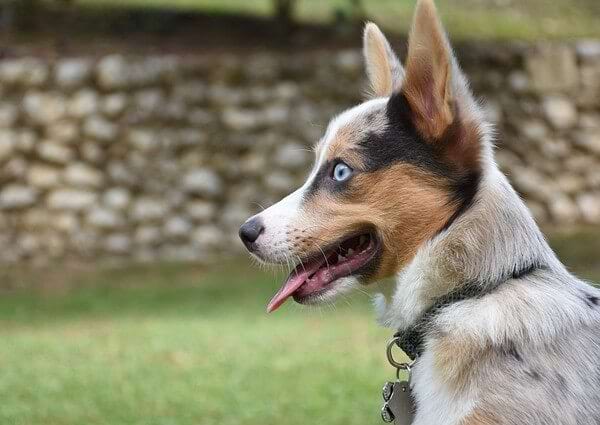
A Cowboy Corgi, also known as a Corgi Heeler, is a fascinating crossbreed that combines the characteristics of two distinct dog breeds: the Australian Cattle Dog (commonly referred to as the Blue Heeler) and the Pembroke Welsh Corgi.
This hybrid showcases the art of crossbreeding, blending the distinct qualities of these two breeds to produce a truly unique and exceptional canine companion.
Parent Breeds of Blue Heeler Corgi Mix
Australian Cattle Dog

The Australian Cattle Dog, commonly known as the Blue Heeler, is a dog breed created for the specific purpose of working with livestock. This unique breed is closely related to Australia’s wild Dingo, which has been instrumental to the success of the country’s cattle industry.
During the 1800s, as the cattle industry in Australia began to grow, there arose a need for a solid herding dog that could help work the cows. Although the British who had come to Australia brought their type of herding dogs, specifically the Smithfield, the terrain and overall climate of the new country was so different that the dogs needed to handle it better.
As a result, the cattlemen began assembling a breed that could handle the high temperatures and challenging terrain while pushing the cattle in the right direction by darting or nipping at their heels. The first crosses were Smithfield bred with Dingoes, the feral dogs that had been evolving to thrive in the Australian Outback since their introduction to the continent by the earliest people to inhabit Australia.
However, cattle farmers did not stop there. They continued to breed these early crosses with other breeds, such as the Scottish Highland Collie, to produce a top-notch working companion that could handle the heat and rugged Australian terrain. Later, breeders crossed Dingoes with Collies as herding dogs and added the Dalmatian and the Black and Tan Kelpie to refine the breed further.
As a result of this extensive crossbreeding, the Blue Heeler has become a uniquely adapted breed of dog that is perfectly suited for the challenging conditions of the Australian Outback. This breed is known for its loyalty and tenacity and remains an essential part of the country’s cattle industry.
Pembroke Welsh Corgi
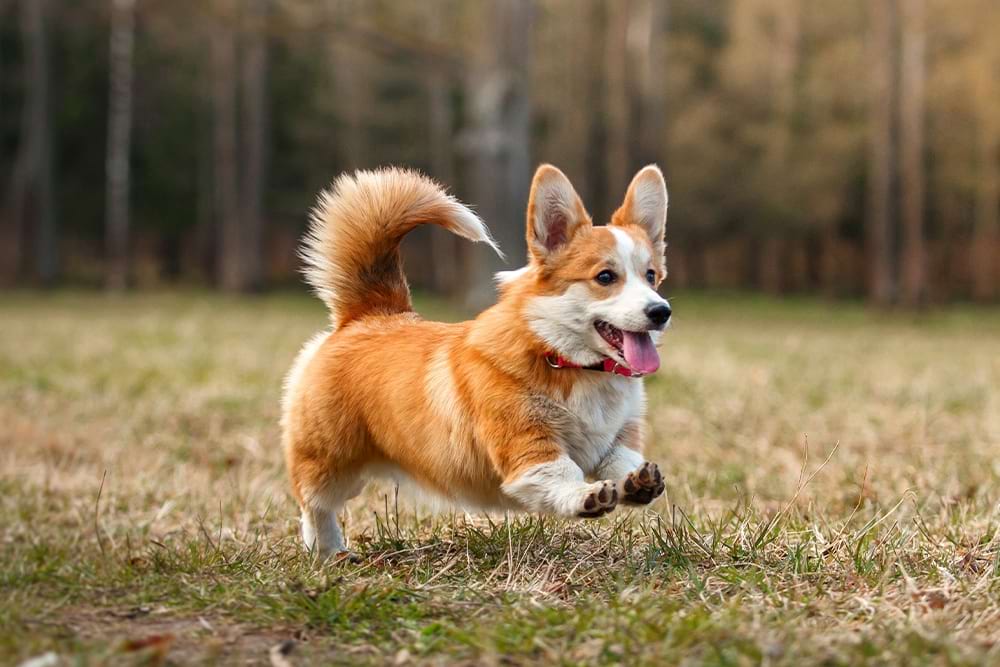
The Pembroke Welsh Corgi is an intriguing dog breed with a rich history dating back to the early 1100s. Belgian herding dogs were believed to be brought to Wales by visitors to Henry I’s the kingdom. These dogs were later crossed with the preexisting Cardigan Welsh Corgi, creating the Pembroke Welsh Corgi.
While the crossbreeding of the Belgian herding dogs and the Cardigan Welsh Corgi may have blurred the lines between the two types, efforts to preserve the two kinds as distinct breeds increased in the 1800s. Even today, the Pembroke Welsh Corgi and Cardigan Welsh Corgi remain separate breeds.
Interestingly, “healing” is most effective when the Pembroke Welsh Corgi is used with a species like cattle or sheep that tends to move as one organism instead of scattering in different directions. The low-set Corgi was bred to be able to duck quickly if an angry cow decided to throw a kick in his order. With a weight of up to thirty pounds and a height of ten to twelve inches at the shoulder, the Pembroke Welsh Corgi has a foxy face and a long body, making it a favorite of equestrians.
Although Pembroke Welsh Corgis are fearless enough to bite at a bull’s heels, they are also loyal and loving family dogs. It’s important to note that Pembroke’s thick, weather-proof double coat sheds daily as well as seasonally, so a daily brushing with a long pin slicker brush will help keep down the amount of hair in the house.
The Pembroke Welsh Corgi is a fascinating breed with a long and exciting history. Its unique characteristics make it a popular choice for many people, whether equestrians, farmers, or simply looking for a loyal and loving family pet.
Physical Appearance
When it comes to the size and appearance of the Blue Heeler Corgi mix, it’s all about dominant genes. Despite Corgi’s short-legged heritage, this breed will have longer legs than its Corgi parent, as long legs dominate over short ones. This unique blend may stand as tall as a full-grown Blue Heeler or even reach up to eighteen inches tall at the shoulder, making it one of the more elevated Corgi mixes.
But don’t be fooled by its height, as the Heeler and Corgi are well-muscled dogs. The resulting blend of the two breeds will likely have a longer body than a purebred Blue Heeler. On the other hand, their faces are quite similar, with wide jowls and triangular ears. Still, the Corgi side of the family adds a charming hint of a smile to their countenance, making them an adorable and charismatic mix of two particular dog breeds.
size, height, and weight
Oh boy, let me tell you about the size, height, and weight of a Blue Heeler Corgi Mix! It’s a medium-sized dog, which means it’s not too small but not too big. And let me tell you, despite having short legs, this breed is no toy dog!
Now, you may be wondering how much this furry friend weighs. Well, the weight of a Blue Heeler Corgi Mix doesn’t vary too much from the weight of its parent breeds. But when it comes to height, the mix falls somewhere in between the Corgi and the Blue Heeler. So, expect a Cowboy Corgi to have a similar body type to the Corgi but with longer legs, standing anywhere from 12 to 20 inches tall.
| Gender | Height Range | Weight Range |
| Male | 12 – 20 inches | 25 – 40 pounds |
| Female | 12 – 18 inches | 25 – 35 pounds |
Coat Type and Colors
When it comes to their coat and colors, it gets complicated with the Blue Heeler Corgi Mix.
Australian Cattle Dogs, aka Blue Heelers, have two primary colors: red and blue. Red is sable, while blue is the point, but only the point variety is a true Blue Heeler.
On the other hand, Corgis come in various colors, including black, fawn, red, and sable, sometimes with white markings on multiple parts of their body.
With sable being dominant over point, your Corgi Blue Heeler mix will inherit the sable coat from the Corgi side of the family. But then again, genetics can be unpredictable, so who knows what colors you might end up with!
Temperament and Personality
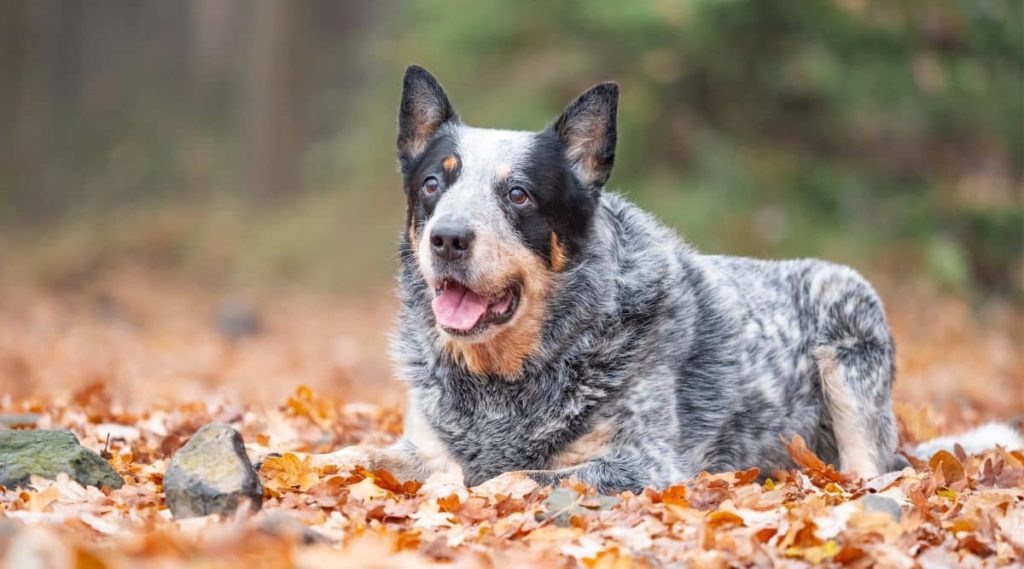
The temperament of a Blue Heeler Corgi mix is a fascinating and complex topic. The Australian Cattle Dog and the Pembroke Welsh Corgi are known for their natural inclination to chase and herd, and this breed blends and inherits these qualities. Your furry friend is an energetic pup that craves physical activity, so be prepared to keep up with him. Your blend will thrive on a good run despite having shorter legs than the average dog.
However, you should also know that your dog’s herding instincts can take over anytime. Your Cowboy Corgi has a strong desire to chase and herd animals, so keeping him on a leash to avoid running after animals or cars is important. Additionally, they might try to herd children or other pets in the household, so monitoring them during playtime is important. Your Blue Heeler Corgi mix can be a loyal and affectionate companion with proper socialization, training, and exercise.
Does Corgi Heeler Mix make great family pets?
All of you want to know if the Corgi Heeler Mix makes a hootin’ and hollerin’ family pet. Well, let me tell you, these pups are a blend of two hardworking herding breeds. So, all of you can expect them to maintain their herding instinct, which could lead to nipping at youngins during playtime. However, with proper training, this tendency can be fixed up.
Overall, the Blue Heeler Corgi Mix is a terrific family pet, fiercely protective of their kinfolk. They aren’t usually prone to aggression and get along right well with other critters. These dogs are also good at guarding their territory, so you can count on them to keep an eye out for you.
Are Corgi Blue Heeler Mix affectionate dogs?
Corgi Heeler Mix dogs are affectionate in the grand scheme of things but don’t always crave physical attention. They might have an independent streak and not necessarily enjoy being snuggled all day. These dogs aren’t typical lapdogs and enjoy being active and playful rather than just lounging around getting petted.
Training
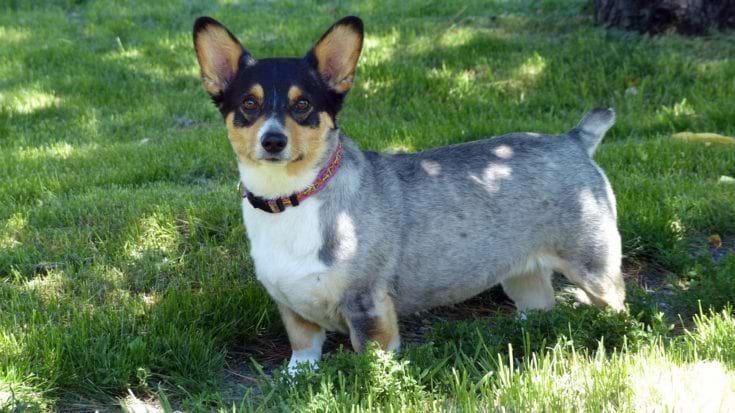
The Blue Heeler Corgi mix is a pup with an insatiable work ethic bred to work alongside a human partner. The ACD Corgi blend is intelligent and requires patience and perseverance to train, and rewards for positive behavior can help to ease their intense work ethic.
To help your furry friend feel calm and relaxed in your home, meet their exercise needs and socialize them early with other dogs. Supervising their interactions with cats and small animals is important, as their herding instincts may trigger a high prey drive.
Exercise Requirements
Your Blue Heeler Corgi mutt will be bursting with energy and always eager to play, so be prepared to provide them multiple exercise opportunities each day. Since Blue Heelers are great running partners and Corgis are not exactly low-energy dogs, your blend should be happy to join you for a daily jog or a brisk walk around the block.
These two breeds were bred to work hard, so your pup will thrive with a purpose. Whether you live on a farm or in the city, find ways to challenge your brain and give them a “job” to do. Canine sports like agility are a great way to engage your pup and help them channel their energy positively.
Remember that this mix can adapt to living conditions with enough exercise and mental stimulation. As much as they love to run around and play, they also appreciate a warm, cozy home to rest in. They can thrive in apartments or tiny homes as long as they have enough exercise and playtime. However, a big yard or open space is the best option for this breed.
Grooming and Cleaning
To tackle the challenge of grooming a Blue Heeler Corgi mix, you must be ready to take on some serious hair. This breed comes equipped with a double coat, which requires regular attention to keep it in good condition. Both parent breeds shed twice a year heavily, and the mix is no exception. Be prepared to do some severe brushing to keep the hair under control.
In addition to brushing, your Blue Heeler Corgi mix will need regular baths to keep it clean and smelling fresh. If your pup spends a lot of time outdoors, you may need to give it more frequent baths. On bath day, make sure to check the ears for wax buildup and give them a thorough cleaning. Keeping your dog’s coat and ears clean is essential to maintaining good health and hygiene.
Are Blue Heeler Corgi Mix hypoallergenic ?
No, the Blue Heeler Corgi Mix is not hypoallergenic. This breed sheds a lot due to its Corgi heritage, requiring regular grooming to manage shedding.
If allergies or pet hair sensitivity is a concern, consider a different breed. Otherwise, this mix can be a great companion with its lively personality and loyalty.
Food and Diet
Your Blue Heeler Corgi mix’s ravenous appetite is as unpredictable as the weather, and determining how much to feed it can be an enigma. Your dog’s food requirements will depend on its activity level and the type of exercise it engages in.
A well-balanced diet with a high protein content is recommended to meet your dog’s nutritional requirements. You should, however, be cautious not to overfeed your pup, as it could lead to obesity, a weighty issue for any pet. Determining the right food to give your dog can be challenging, so why not consult your vet for expert advice?
Getting a diet that meets your furry friend’s requirements while maintaining a healthy weight is crucial. Additionally, remember that your pup’s diet will change as it matures, and what was appropriate when it was a puppy might not be the right choice for an adult or senior dog.
Common Health Issues
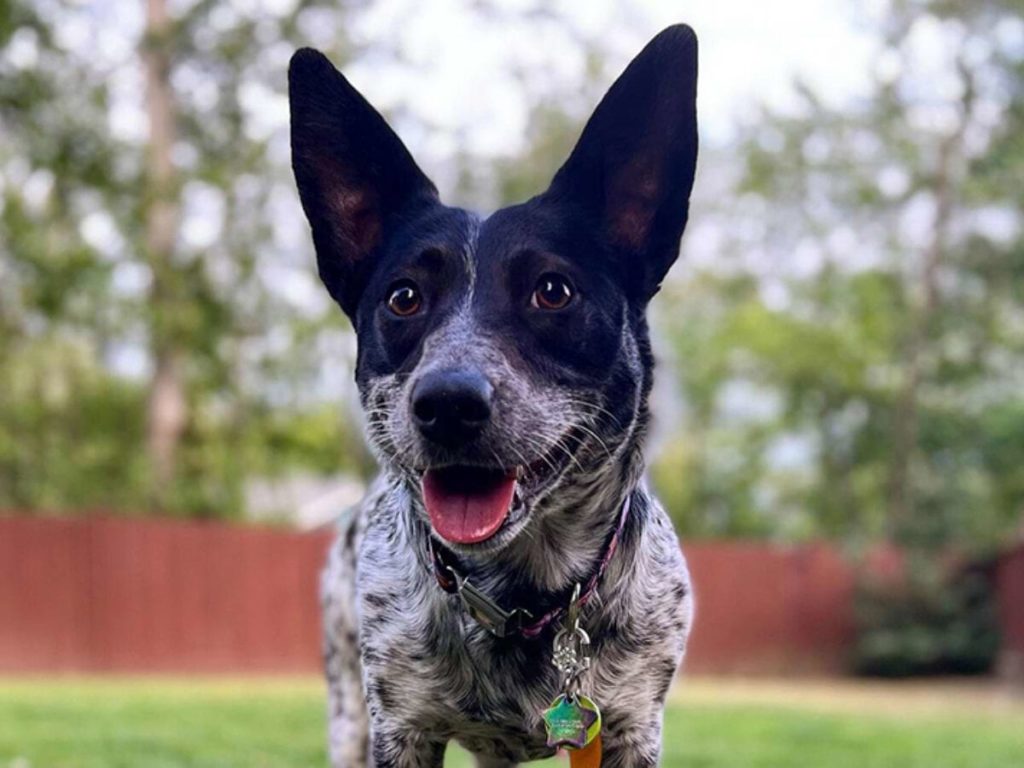
Hold onto your cowboy hats, folks! Regarding health issues for the Blue Heeler Corgi mix, it’s important to remember that hybrid dogs like this can still be prone to genetic issues. While it’s true that mixing breeds can sometimes reduce health issues, it doesn’t mean your pup won’t ever face health problems.
So, what health issues are we talking about? Here are five common ones that Cowboy Corgis can inherit:
1.Hip Dysplasia
Hip dysplasia is a gnarly genetic disorder affecting many breeds, including Blue Heeler Corgi mixes. The condition happens when the hip socket and ball joint don’t grow together as they should, causing issues with mobility and leading to excruciating pain when standing or walking. It’s a debilitating condition that can be very challenging to manage, so it’s essential to watch out for it in your furry friend.
2.Degenerative Myelopathy
Degenerative Myelopathy, a common condition in dogs, affects their spinal cord and can cause long-term effects like paralysis. It is a progressive disease that affects the nerves that control muscle movement in the hind legs, leading to the loss of mobility and coordination.
3.Von Willebrand’s Disease
When it comes to the health of your Blue Heeler Corgi mix, it’s important to be aware of the potential for Von Willebrand’s Disease. This blood disorder is caused by a lack of Von Willebrand protein, which helps blood clotting. As a result, affected dogs may experience excessive bleeding or bruising, which can be dangerous if left untreated. Knowing the signs of Von Willebrand’s Disease and seeking early treatment can help keep your dog healthy and happy.
4.Primary Lens Luxation
Are you aware of the eye disorder common among Blue Heelers, Primary Lens Luxation? This genetic condition happens when the ligaments holding the lens together break, causing it to move out of its correct position. If left untreated, the dog will eventually lose its vision, so dog owners must get an early diagnosis and proper treatment from a veterinarian.
5.Osteochondritis Dissecans
In Blue Heelers, osteochondritis dissecans occurs due to inadequate cartilage development. One of the early symptoms of this disorder is lameness.
How long Does Blue Heeler Corgi Mix Live?
To be fully prepared to care for a Corgi Cowboy, you must understand they are in it for the long haul. These dogs have a lifespan that typically ranges from 12 to 16 years.
So, before you jump in, you need to be committed to providing them with the best care possible throughout their life. You want to be aware of how long they live, so ensure you are ready to take on the responsibility of having a dog.
How Much Does the Blue Heeler Corgi Mix Cost?
How much does a Blue Heeler Corgi Mix cost? Hold on to your hat because it will be a wild ride! A Blue Heeler Corgi Mix can range from a cool grand to a whopping $2500! It’s quite a range. But wait, there’s more! The total cost will depend on various factors such as the breeder’s reputation, the location, the puppy’s generation, additional health tests, insurance, and more! So, buckle up and research before taking the plunge and getting yourself a Blue Heeler Corgi Mix!
Is the Blue Heeler Corgi Mix right for me?
Are you considering getting a Blue Heeler Corgi Mix? Is it the right fit for you? This breed is a fantastic addition to any family, with its herding and working instinct making it an excellent family protector.
But be ready to give your dog lots of exercises, or you might find your home in disarray from the dog’s chewing and other destructive behaviors.
Despite the breed’s shedding tendencies, a Blue Heeler Cowboy Corgi is not hypoallergenic, so be prepared for allergies if they are an issue for you.
With a 12 to 16 years lifespan, this dog breed will be with you for a long time, so make sure you are ready for a long-term commitment. A Blue Heeler Corgi Mix is a fun-loving and loyal dog that will make a great addition to your family if you’re willing to put in the time and effort to keep them happy and healthy.
List of dogs that are similar to Blue Heeler Corgi Mix
- Corgi-Dalmatian Mix
- Corgi-Yorkie Mix
- Corgi-Poodle Mix
- Corgi-Boxer Mix
- Corgi-Pomeranian Mix
- Blue Heeler-Chihuahua Mix
- Blue Heeler-Rat Terrier Mix
- Blue Heeler -jack Russell Mix
- Mini Blue Heeler
FAQ QUESTION
1.How big will a Blue Heeler Corgi Mix get?
This breed is classified as a medium-sized dog, with males reaching up to 20 inches in height and weighing up to 40 pounds.
Conversely, females can grow up to 18 inches in height and weigh up to 35 pounds. Be sure to give your Blue Heeler Corgi Mix proper nutrition and exercise to keep them healthy and happy!
2.What is a Blue Heeler Corgi Mix called?
The hybrid dog that results from breeding a Blue Heeler and a Corgi can be called many names. You might know them as a Corgi Heeler Mix, Cowboy Corgi, Queensland Heeler Corgi Mix, Corgi Cattle dog Mix, Australian Cattle dog Corgi Mix, Blue Healer Corgi Mix, or some other variation. It’s a matter of personal preference, and your name can reflect your dog’s unique characteristics.
Conclusion
In conclusion, the Blue Heeler Corgi Mix is a unique and friendly breed that combines the loyalty, intelligence, and playfulness of both the Blue Heeler and the Corgi. While this breed can make an excellent companion for families and active owners, it is essential to understand that owning a Blue Heeler Corgi Mix requires significant time, attention, and training.
By considering the temperament, health concerns, and exercise needs of this breed, you can decide whether the Blue Heeler Corgi Mix is the right dog for you. With proper care and training, this breed can bring years of joy and companionship to its owner and serve as an excellent companion for outdoor activities and exercise.

Pingback: Sable Corgis 101: Everything You Need to Know 2023
Pingback: Corgi Yorkie Mix: Everything You Need to Know 2023
Pingback: Corgi Pug Mix 101: Everything You Need to Know 2023
Pingback: Blue Merle Corgi: Exploring the Fascinating World of Corgis 2023
Pingback: Corgi Poodle Mix: Surprising Facts You Need to Know 2023
Pingback: Boxer Corgi Mix: Everything You Need to Know 2023
Pingback: Corgi Pomeranian Mix: Powerful Truths to Touch Your Heart 2023
Pingback: St. Bernard Corgi Mix: Interesting Facts You Need to Know 2023
Pingback: Fluffy Corgi: Unveiling the Beauty of this Rare Breed 2023
Pingback: Are Corgis Hypoallergenic? Consider for Your New Canines 2023
Pingback: Do Corgis Shed? Helpful Tips You Need to Know 2023
Pingback: Corgi Dalmatian Mix: The Ultimate Handbook to The Owner 2023
Pingback: Blue Heeler Chihuahua Mix: Revealing Hidden Wonders 2023
Pingback: Rottweiler Blue Heeler Mix: Dive into the Interesting World 2024
Pingback: Mini Blue Heeler: Interesting World Of Your Dog 2024
Pingback: Blue Heeler Jack Russell Mix: Revealing Hidden Wonders 2024
What excellent words
In my opinion it is obvious. Try to look for the answer to your question in google.com